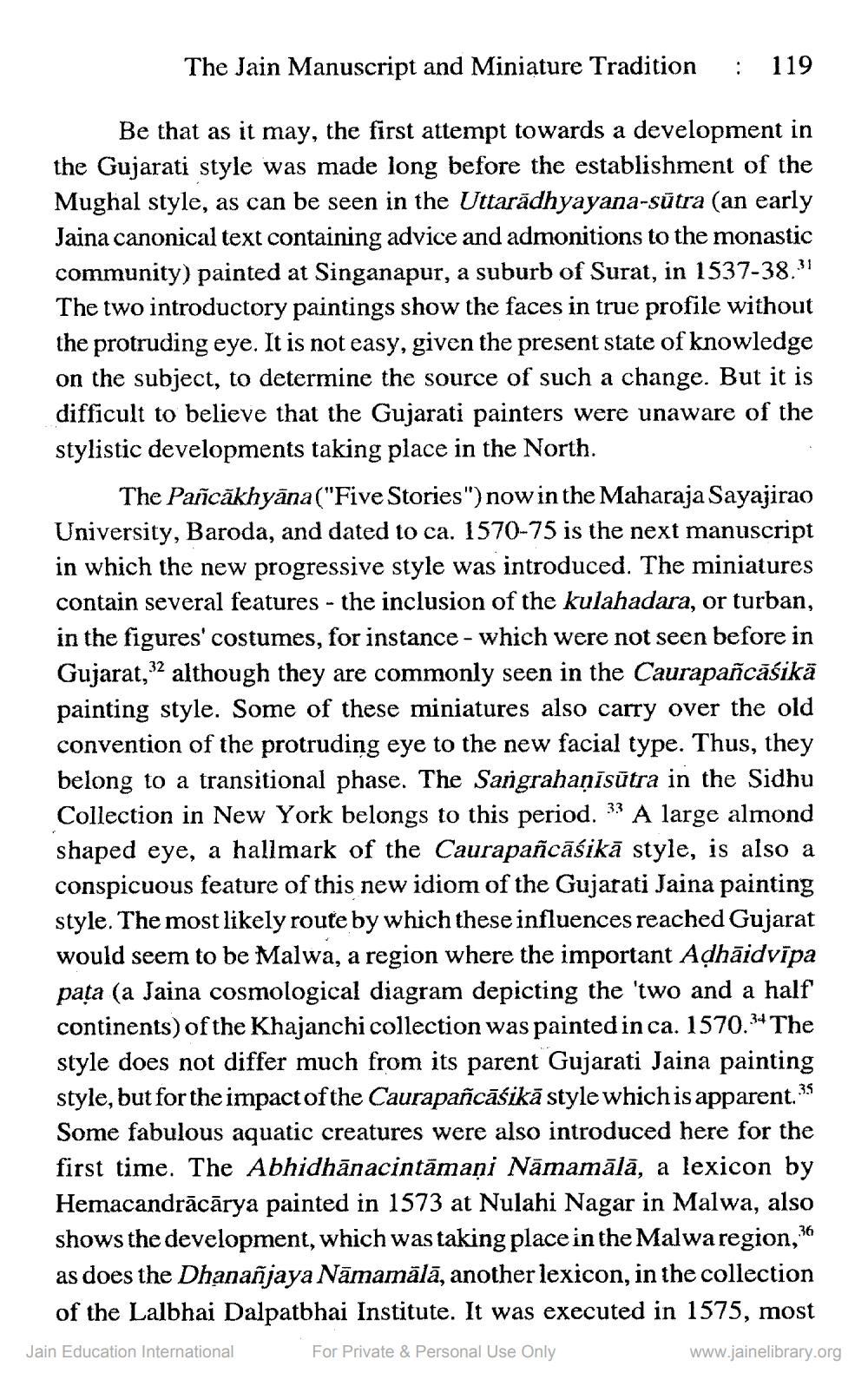________________
The Jain Manuscript and Miniature Tradition
:
119
Be that as it may, the first attempt towards a development in the Gujarati style was made long before the establishment of the Mughal style, as can be seen in the Uttarādhyayana-sutra (an early Jaina canonical text containing advice and admonitions to the monastic community) painted at Singanapur, a suburb of Surat, in 1537-38." The two introductory paintings show the faces in true profile without the protruding eye. It is not easy, given the present state of knowledge on the subject, to determine the source of such a change. But it is difficult to believe that the Gujarati painters were unaware of the stylistic developments taking place in the North.
The Pascākhyāna("Five Stories") now in the Maharaja Sayajirao University, Baroda, and dated to ca. 1570-75 is the next manuscript in which the new progressive style was introduced. The miniatures contain several features - the inclusion of the kulahadara, or turban, in the figures' costumes, for instance - which were not seen before in Gujarat, 52 although they are commonly seen in the Caurapañcāśikä painting style. Some of these miniatures also carry over the old convention of the protruding eye to the new facial type. Thus, they belong to a transitional phase. The Sangrahaņīsūtra in the Sidhu Collection in New York belongs to this period. 33 A large almond shaped eye, a hallmark of the Caurapancāśikā style, is also a conspicuous feature of this new idiom of the Gujarati Jaina painting style. The most likely route by which these influences reached Gujarat would seem to be Malwa, a region where the important Adhāidvīpa pata (a Jaina cosmological diagram depicting the 'two and a half continents) of the Khajanchi collection was painted in ca. 1570.34 The style does not differ much from its parent Gujarati Jaina painting style, but for the impact of the Caurapañcāśikā style which is apparent. ** Some fabulous aquatic creatures were also introduced here for the first time. The Abhidhānacintāmaņi Nāmamālā, a lexicon by Hemacandrācārya painted in 1573 at Nulahi Nagar in Malwa, also shows the development, which was taking place in the Malwa region,36 as does the Dhanañjaya Nāmamālā, another lexicon, in the collection
of the Lalbhai Dalpatbhai Institute. It was executed in 1575, most Jain Education International For Private & Personal Use Only
www.jainelibrary.org




